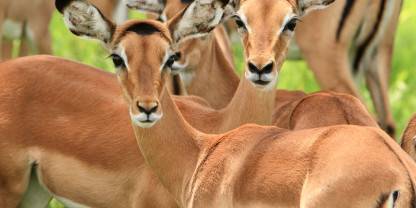Eswatini (formerly Swaziland) has more than 500 bird species listed. This is a remarkable number for a tiny landlocked country. It is home to 52 southern Africa endemics, unique to the region. The beautiful Malolotja Nature Reserve is a breeding site for the blue swallow, one of southern Africa’s rarest birds. Southern bald ibis has several nesting sites around the country and the Vulnerable Cape vulture can often be seen circling in the sky.
Endemic & Near-endemic Birds
Eswatini has no endemic birds.(NE) near-endemic = lives in Eswatini and neighboring countries
- Brown scrub robin (NE)
- Buff-streaked chat (NE)
- Bush blackcap (NE)
- Chorister robin-chat (NE)
- Knysna turaco (NE)
- Pink-throated twinspot (NE)
- Rudd’s apalis (NE)
- Southern bald ibis (NE)
Other Birding Specials Treats for Avid Birders
- African broadbill
- African finfoot
- Bearded scrub robin
- Black coucal
- Black-winged lapwing
- Blue swallow
- Denham’s bustard
- Eastern long-billed lark
- Eastern nicator
- Fan-tailed grassbird
- Grey sunbird
- Ground woodpecker
- Gurney’s sugarbird
- Pink-throated twinspot
- Retz’s helmet-shrike
- Scaly-throated honeyguide
- Senegal lapwing
- Sentinel rock thrush
- Striped flufftail
- Thick-billed cuckoo
- White-backed night heron
Best Time for Bird Watching
The birdlife in Eswatini is at its best from November to April, when the migratory birds from Europe and northern Africa are present, including the very rare blue swallow. At this time, many resident bird species are nesting and are in breeding plumage. However, the southern bald ibis is only active during the winter months, from June to October. For wildlife viewing, the Dry season is better.
Recommended Birding Books
-
Roberts Bird Guide (2nd edition; book and app)
-
Sasol Birds of Southern Africa (book and app)
-
Newman’s Birds of Southern Africa (book and app)
-
Pocket Guide: Birds of Southern Africa

